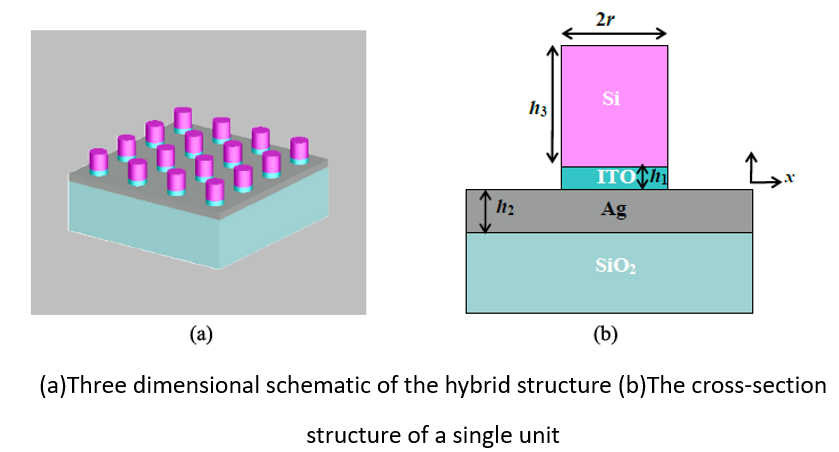Nonlinearities have important applications in all-optical signal processing, such as ultrafast laser generation, integrated photonic circuits, biosensing and biomedicine. The long-term goal of nonlinear optics is to dramatically change the refractive index of materials which have sub-picosecond response times and compatible with CMOS technologies using low-power light fields. However, conventional materials which exhibit extremely weak nonlinearities and also require strong source of power and long interaction paths make it extremely difficult to design sub-wavelength all-optical active devices. Recently, a new class of materials with a vanishing permittivity, known as epsilon-near-zero (ENZ) materials has attracted great interest due to their potential intriguing linear and large nonlinear responses.
Therefore, a research team led by Prof. LIU Hongjun from Xi’an Institute of Optics and Precision Mechanics (XIOPM) of the Chinese Academy of Science (CAS) reported for the first time a high-quality quasi-BIC (Bound state in the continuum) based on the ENZ metasurface. The research was published in Materials Today Nano.
Bound states in the continuum(BICs)is a powerful way to boost radiation Q-factor which is la localized wave state in the radiation continuum spectral and does not couple with the radiation wave. Therefore, quasi-BIC based on indium tin oxide (ITO) metasurface which is one of the most widely available ENZ material is formed for the first time by embedding ITO thin films into metal-dielectric hybrid structures to eliminate radiation losses and get high Q-factor even on large loss ITO film. The destructive interference between the Berreman mode and photonic mode to form the Friedrich-Wintergen (FW) BIC is realized. With this structure, the electric field is strongly confined in the ENZ film and the nonlinear refractive index coefficient is 1.63×10-12m2/W which is three orders of magnitude larger than that of the bare ITO film. The metasurface exhibits a modulation response with an extinction ration up to 23.2dB and the instantaneous response time is 600 fs which is extremely high modulation speed up to the THz level. Moreover, the proposed method can also be used for ultrafast modulation of other nonlinear responses like second and third harmonic generation, four-wave mixing, Purecell factor enhancement and lasing.
Available online 20 March 2024

Fig. Hybrid metasurface structure(Image by SHI et al.)
Download: